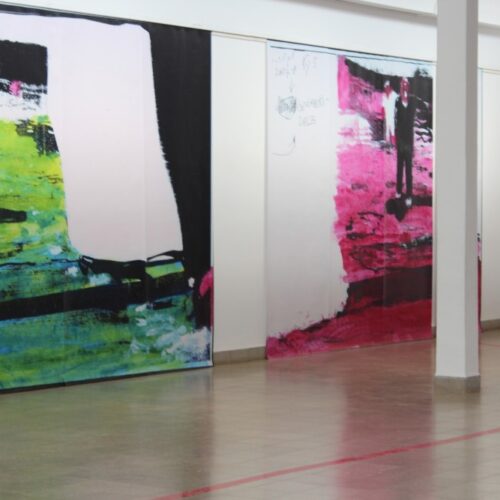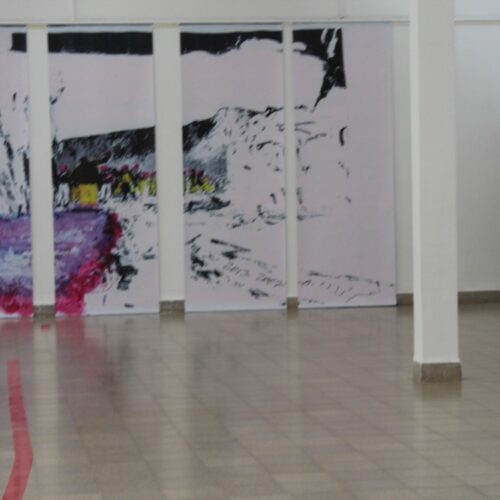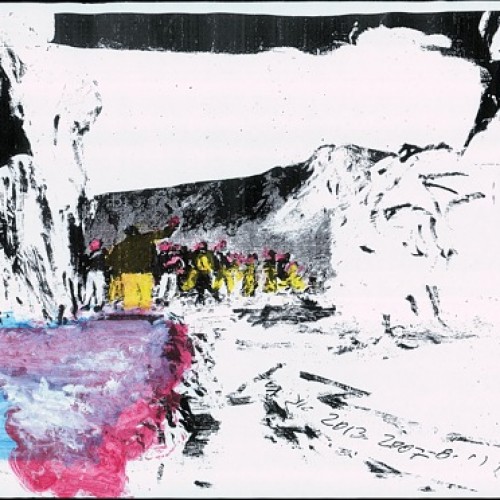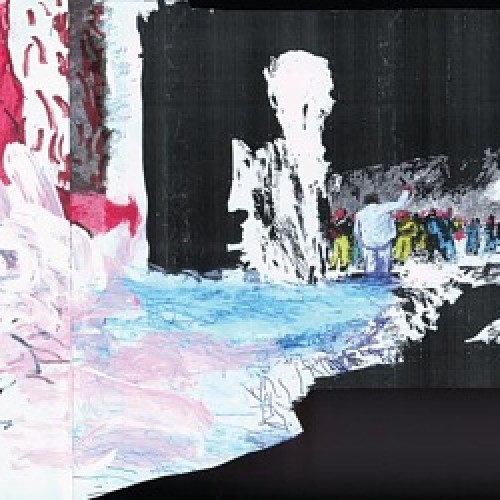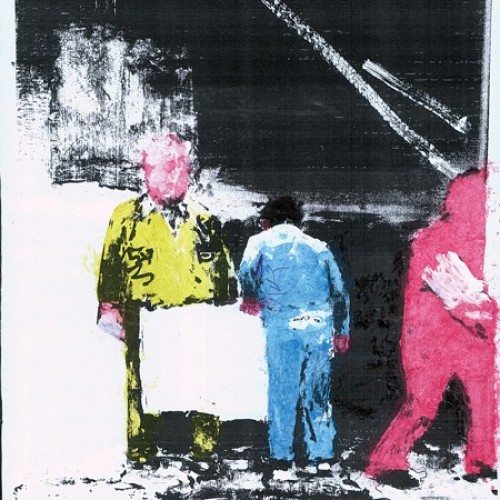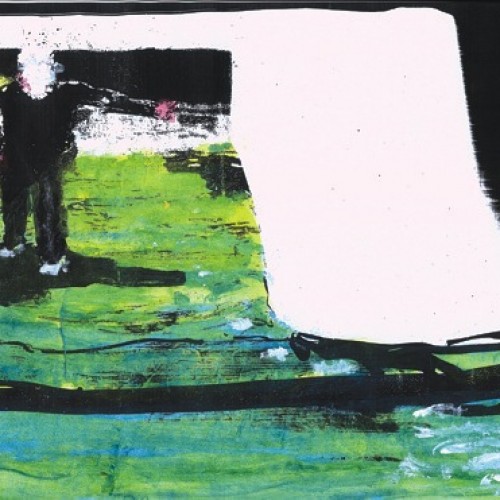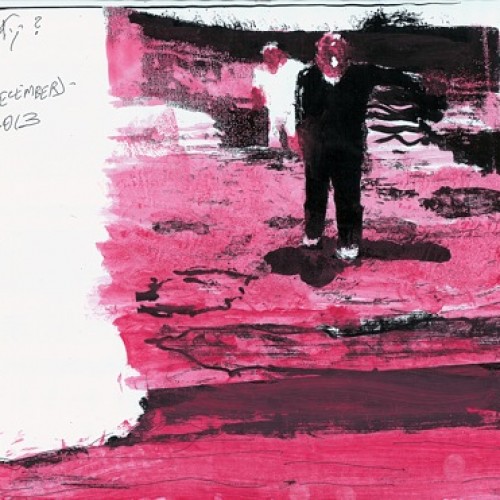The Ran Harari exhibition at the Ein Harod Mishkan Museum of Art is comprised of large paintings, the largest of them seven meters in length and five meters in height. Harari creates hundreds of works on paper, all of them small because of limitations in means and in working space, but he sees those as preliminary sketches for large-scale works. The image seems partly a painting and partly a photograph or a scene engraved in the memory from a movie – figures on the background of a large structure that looks like part of a mountain, or figures standing in an open landscape. The materials are transitory ones. The compositions are spread out on a structure whose forms keep changing, with the same combinations recurring in them in different variations, each time revealing something new in the same structure. The works are composed of segments, in a transitory creation of junctures. The final outcome is a kind of three-dimensional crossword that evokes a sense of topographical depth. The depth, the expanse and the sense of distance also evoke a sense of time. This engagement with space and time arouses associations with cinematic work.
Ran Harari was born in Kibbutz Mishmar Hayam (which today is called Kibbutz Afek), of which his parents were among the founders. In 1954, after a period of transition, the family moved to Kibbutz Afikim. When he reached adulthood, Ran Harari left the kibbutz, lived in Tel Aviv, and at present he is living in Kibbutz Beit Hashitah. He has engaged in art since his childhood, and has held exhibitions at the Ein Harod Mishkan Museum of Art, the Museum of Israeli Art in Ramat Gan, and the Art Gallery in Beit Gavriel. His works have been acquired by the Schocken Collection and by museums.
Ran Harari
Curator: Galia Bar Or
February- May 2014


